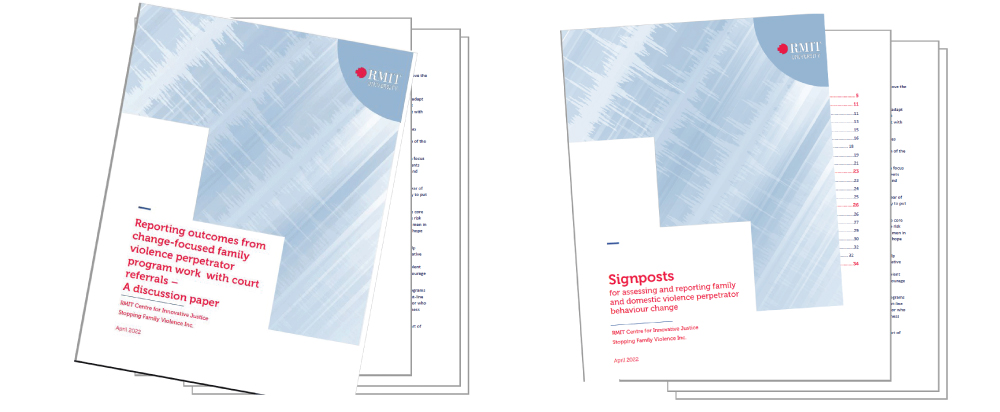Signposts to perpetrator change
Courts and statutory authorities regularly make decisions about a perpetrator’s level of risk to adult and child victim-survivors without much information about the type and nature of risk that he may continue to pose. In the absence of any more detail, these authorities often look to measures such as an individual’s attendance at a MBCP as an indication of reduced risk.
Continuing our focus on court-based perpetrator interventions since Victoria’s Royal Commission into Family Violence, the CIJ and external colleagues have released a new independent paper. Lead author Rodney Vlais, Elena Campbell and Damian Green from Stopping Family Violence in Western Australia explore a question which arose during previous CIJ projects, being the extent to which Men’s Behaviour Change Programs (MBCPs) or other change-focused interventions should report participant change when a perpetrator is referred by a court or other authority.
Courts and statutory authorities regularly make decisions about a perpetrator’s level of risk to adult and child victim-survivors without much information about the type and nature of risk that he may continue to pose. In the absence of any more detail, these authorities often look to measures such as an individual’s attendance at a MBCP as an indication of reduced risk.
Participation in – or even completion of – an MBCP or other change-focused program, however, offers little indication of a meaningful shift in a perpetrator’s attitudes or patterns of behaviour. Any steps towards change that could be apparent may be self-reported, limited in scope, or motivated just as much by the legal system’s intervention as by any individual recognition of the harm that a perpetrator has caused. Relying on completion of a program as a measure may therefore lead inadvertently to decisions made on the basis of false assumptions that a perpetrator has been ‘held accountable’, simply by virtue of his referral to an MBCP.
Because of the limits on the information that a MBCP may hold at any particular point in time, this means that programs have historically been reluctant to offer any comment about an individual perpetrator’s participation or ‘progress’ that could be misconstrued or given inappropriate weight. Accordingly, reports back from programs have often been limited to the number of sessions that a participant has attended. Perhaps ironically, however, in the absence of any other information, decision makers increasingly default to a perpetrator’s attendance at a program to inform their decisions – reinforcing, rather than debunking assumptions that participation in an MBCP equates to behaviour change.
For this reason, the CIJ and SFV considered that it was time for a cautious discussion about ways to reflect and report on the extent to which a perpetrator has (or has not) started to take incremental steps towards eventually becoming a safer man. This is not only to ensure that referring authorities do not make decisions on false assumptions, but also to support the role of programs in the context of wider integrated responses, as well as the continued development of a much-needed evidence base about perpetrator interventions on a broader scale.
Resources produced by the CIJ and SFV include a concise, accessible paper designed to inform approaches by courts specifically, as well as a more substantial, technical paper designed to inform practice development of MBCPs and other change-focused interventions. The aim of the larger paper is to support the development of a set of ‘signpost’ indicators that programs may be able to use in providing sufficiently nuanced accounts of shifts in perpetrator behaviour and risk.
